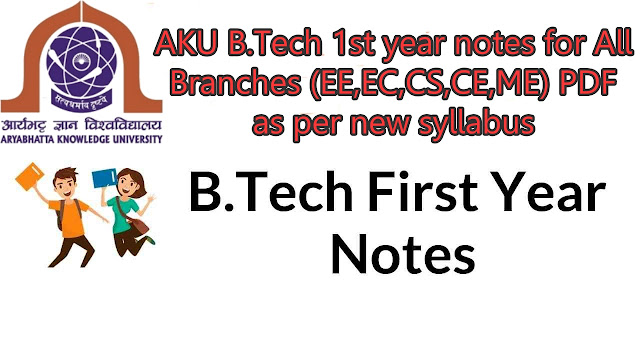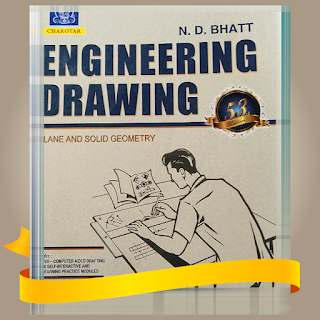NPTEL Introduction To Internet Of Things Assignment 10 Answers 2023 (July-Oct)
Welcome to the world of NPTEL Introduction To Internet Of Things Assignment 10 for 2023 (July-Oct). In this article, we will explore the intricacies of this assignment, covering topics ranging from the fundamental concepts of the Internet of Things (IoT) to the application of IoT in Fog Computing, Smart Cities, and Smart Homes. Get ready to delve into a fascinating journey of knowledge and insights.
NPTEL Introduction To Internet Of Things Assignment 10 Answers 2023 (July-Oct)
In this section, we will provide detailed answers to NPTEL Introduction To Internet Of Things Assignment 10 for 2023 (July-Oct). Let's dive right in:
NOTE:- Answers will be updated shortly and it will be notified in our Youtube & Telegram Group. So Join Now
👉
1. Data fusion enables optimum utilization of massive data gathered from multiple sources.
- Answer: **a. True**
2. Which of the following is a stage in data fusion?
a. Decision level
b. Feature level
c. Pixel level
d. All of the above
- Answer: **d. All of the above**
3. Which of the following is one of the challenges of Data fusion?
a. Imperfection
b. Conflicts
c. Ambiguity
d. All of the above
- Answer: **d. All of the above**
4. Which of the following is one of the theories of evidence-based mathematical methods of data fusion?
a. Belief function
b. Bayesian analysis
c. ANN
d. None of these
- Answer: **a. Belief function**
5. DLNA stands for Digital Living Network Alliance.
- Answer: **a. True**
6. Which of the following are the functional layers in smart parking?
a. Information collection
b. System Deployment
c. Service Dissemination
d. All of these
- Answer: **d. All of these**
7. Which of the following statements are true about the HAN standards?
Statement I: Physical and MAC layers are defined by IEEE802.15.4.
Statement II: Network layer is defined by Zigbee.
Statement III: Application layer is defined by IEEE802.15.4
- Answer: **b. Statements I and III**
8. Which of the following are true about X-10?
Statement I: It allows remote control of compliant transmitters.
Statement II: It has low speed and data rate.
Statement III: It is adopted by GE.
- Answer: **c. Statement I and III**
9. Fill in the blank. ____________ enables vehicles to wirelessly share a diverse range of information.
- Answer: **b. V2X Paradigm**
10. Which of the following is a property of Vehicular Ad-hoc Networks?
a. Is based on DSRC
b. Is based on WAVE
c. Guaranteed low latency
d. All of these
- Answer: **d. All of these**
11. Knob is a switch type of INN.
- Answer: **b. False**
12. Which of the following is responsible for central coordination in Body-brain architecture?
a. Body
b. INN
c. Spinal cord
d. None of these
- Answer: **b. INN**
13. Which of the following stands for DSRC?
a. Directed Short Range Communication
b. Dedicated Short Range Communication
c. Directed Small Range Communication
d. Dedicated Small Range Communication
- Answer: **b. Dedicated Short Range Communication**
14. Ad-hoc is a domain of VANET.
- Answer: **a. True**
15. What are the disadvantages of V2X communication?
a. Increased traffic safety
b. Tracking of movement
c. Efficient use of fuel
d. None of these
- Answer: **b. Tracking of movement**
Understanding IoT (Internet of Things)
IoT is a revolutionary technology that connects various devices and enables them to communicate and share data. It has transformed industries and our daily lives. Here are the answers to Assignment 10 questions related to IoT:
Question 1: Define IoT and explain its significance.
IoT, or the Internet of Things, refers to the network of interconnected physical objects embedded with sensors, software, and other technologies. Its significance lies in its ability to collect and exchange data, enabling automation and smarter decision-making in various domains.
Answer: IoT is a transformative technology that connects devices and objects, allowing them to communicate and share data. Its significance is evident in industries like healthcare, agriculture, and manufacturing, where it enhances efficiency and productivity.
Question 2: Describe the components of an IoT system.
An IoT system comprises three key components: sensors and devices, connectivity, and data processing. Sensors collect data, connectivity ensures communication, and data processing analyzes and interprets the information.
Answer: The components of an IoT system include sensors that gather data, connectivity mechanisms like Wi-Fi or cellular networks, and data processing units that analyze the collected information for actionable insights.
Fog Computing: The Edge of IoT
Fog Computing is a critical aspect of IoT that brings computation closer to the data source. It plays a pivotal role in ensuring low-latency and efficient data processing. Here are the answers to Assignment 10 questions related to Fog Computing:
Question 3: Explain Fog Computing and its advantages in IoT.
Fog Computing extends cloud computing to the edge of the network, reducing latency and ensuring real-time data processing. Its advantages include faster response times, improved security, and reduced data transfer costs.
Answer: Fog Computing is an extension of cloud computing that brings data processing closer to the data source. Its advantages in IoT include reduced latency, enhanced security, and cost-effective data management.
Question 4: Discuss the use cases of Fog Computing in Smart Cities.
Fog Computing in Smart Cities can be applied to traffic management, public safety, and environmental monitoring. It enables real-time data analysis, leading to better urban planning and resource allocation.
Answer: Fog Computing is instrumental in Smart Cities, enabling real-time data analysis for traffic management, public safety, and environmental monitoring. It enhances the efficiency of city services and improves the quality of life for residents.
Smart Cities: Pioneering Urban Development
Smart Cities harness technology to create more efficient, sustainable, and livable urban spaces. Here are the answers to Assignment 10 questions related to Smart Cities:
Question 5: Define Smart Cities and list their key features.
Smart Cities leverage technology to enhance infrastructure, transportation, energy, and governance. Key features include efficient resource management, sustainable practices, and citizen engagement.
Answer: Smart Cities utilize technology to improve infrastructure, transportation, energy, and governance. Key features encompass resource efficiency, sustainability, and citizen involvement in decision-making.
Question 6: Explain the role of IoT in transforming cities into Smart Cities.
IoT plays a pivotal role in Smart Cities by providing real-time data for efficient resource allocation, traffic management, and environmental monitoring. It empowers cities to make data-driven decisions.
Answer: IoT is the backbone of Smart Cities, providing data for resource allocation, traffic management, and environmental monitoring. It enables cities to become more efficient and responsive to citizens' needs.
Smart Homes: Living in the Future
Smart Homes integrate IoT devices to enhance convenience, security, and energy efficiency. Here are the answers to Assignment 10 questions related to Smart Homes:
Question 7: Describe the components of a Smart Home system.
A Smart Home system comprises sensors, actuators, a central hub, and a user interface. Sensors collect data, actuators perform actions, the hub controls devices, and the user interface allows homeowners to manage the system.
Answer: Smart Home systems consist of sensors that gather data, actuators that perform actions, a central hub for device control, and a user interface for homeowners to interact with and manage the system.
Question 8: Explain how IoT contributes to energy conservation in Smart Homes.
IoT enables energy-efficient Smart Homes by automating lighting, heating, and cooling systems based on occupancy and preferences. It also provides real-time energy consumption data for optimization.
Answer: IoT in Smart Homes promotes energy conservation by automating devices like lights and thermostats based on occupancy and preferences. It empowers homeowners to make informed decisions to reduce energy consumption.
Frequently Asked Questions (FAQs)
Q: What is the significance of Fog Computing in IoT?
Fog Computing is essential in IoT as it reduces latency, enhances security, and enables real-time data processing at the network's edge. It plays a crucial role in ensuring the efficiency of IoT applications.
Q: How does IoT improve the quality of life in Smart Cities?
IoT enhances the quality of life in Smart Cities by enabling efficient resource allocation, reducing traffic congestion, and ensuring the timely delivery of public services.
Q: Are Smart Homes secure, considering the interconnected devices?
Smart Homes can be secure with proper cybersecurity measures. It's essential to regularly update devices, use strong passwords, and secure the home network to protect against potential threats.
Q: What are the challenges of implementing IoT in Smart Cities?
Challenges in implementing IoT in Smart Cities include data privacy concerns, the high cost of infrastructure, and the need for effective governance and regulation to ensure the responsible use of technology.
Q: Can Smart Homes be customized to individual preferences?
Yes, Smart Homes can be customized to individual preferences. Users can set automation rules and preferences for various devices to create a personalized living environment.
Q: How can individuals prepare for a career in IoT and related fields?
To prepare for a career in IoT, individuals should acquire relevant skills in areas like data analytics, cybersecurity, and network management. Additionally, staying updated with the latest IoT trends and technologies is crucial.
Conclusion
In this comprehensive article, we have explored NPTEL Introduction To Internet Of Things Assignment 10 for 2023 (July-Oct), covering IoT, Fog Computing, Smart Cities, and Smart Homes. We've provided detailed answers to assignment questions and delved into the significance of these topics in today's world. As technology continues to advance, the role of IoT in shaping our future becomes increasingly vital.
Remember, the future is bright for those who embrace the world of IoT and its applications in Fog Computing, Smart Cities, and Smart Homes. Stay informed, stay innovative, and continue your journey toward a smarter and more connected future.





